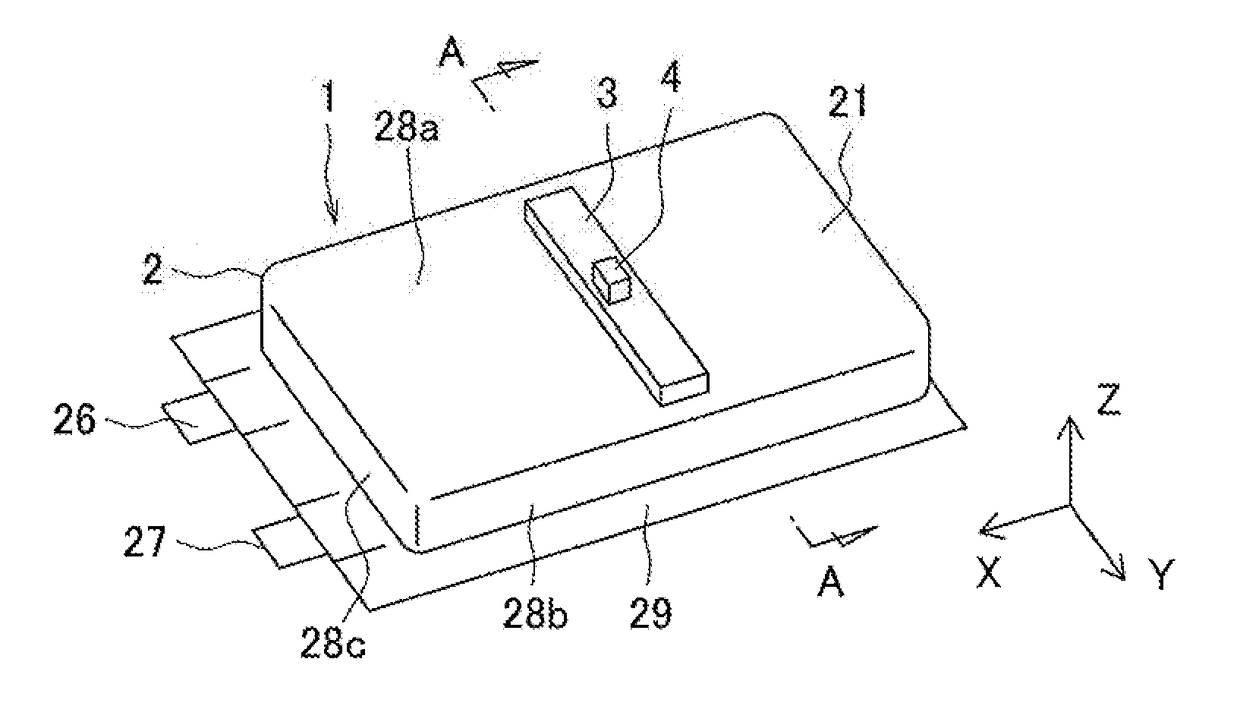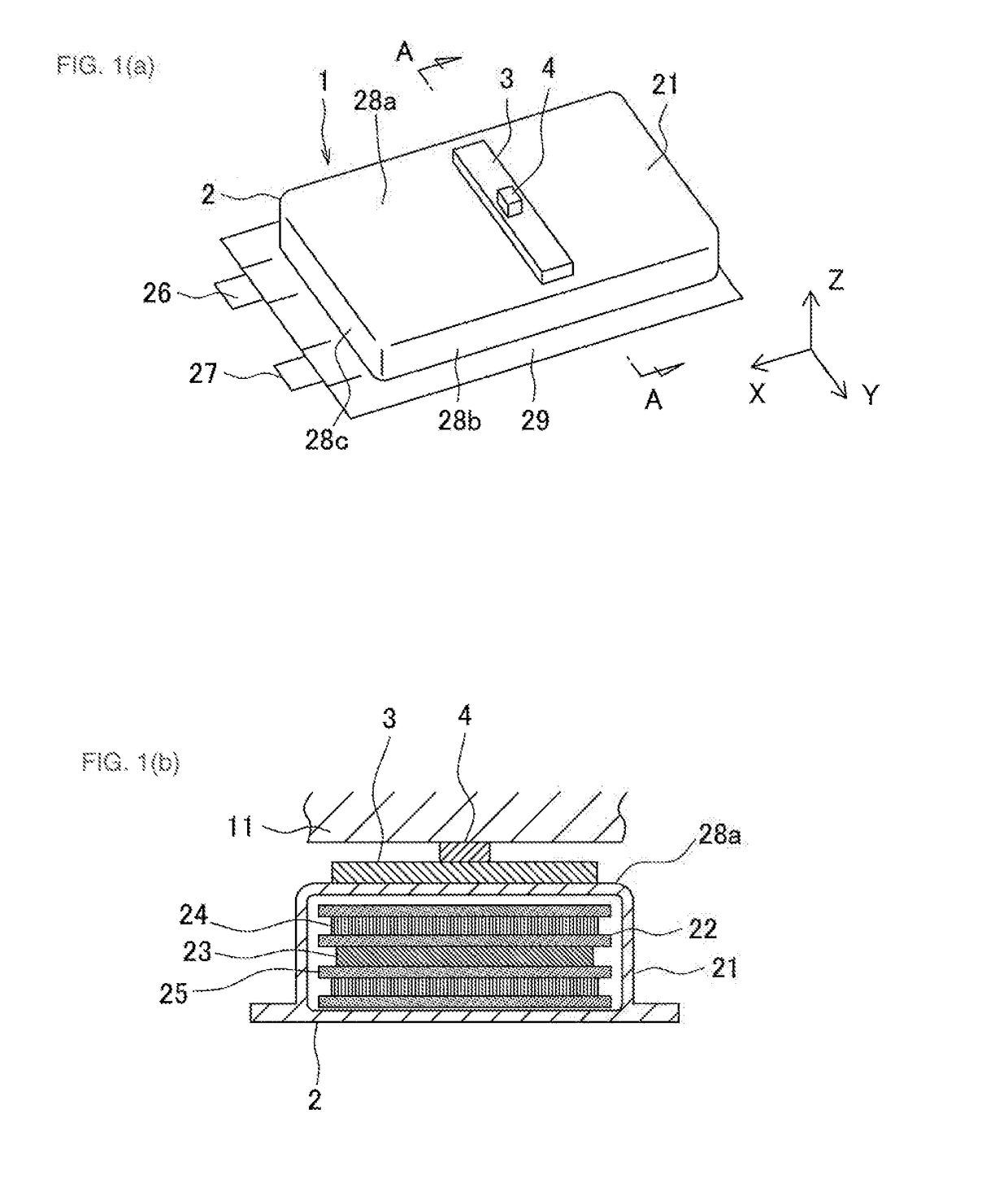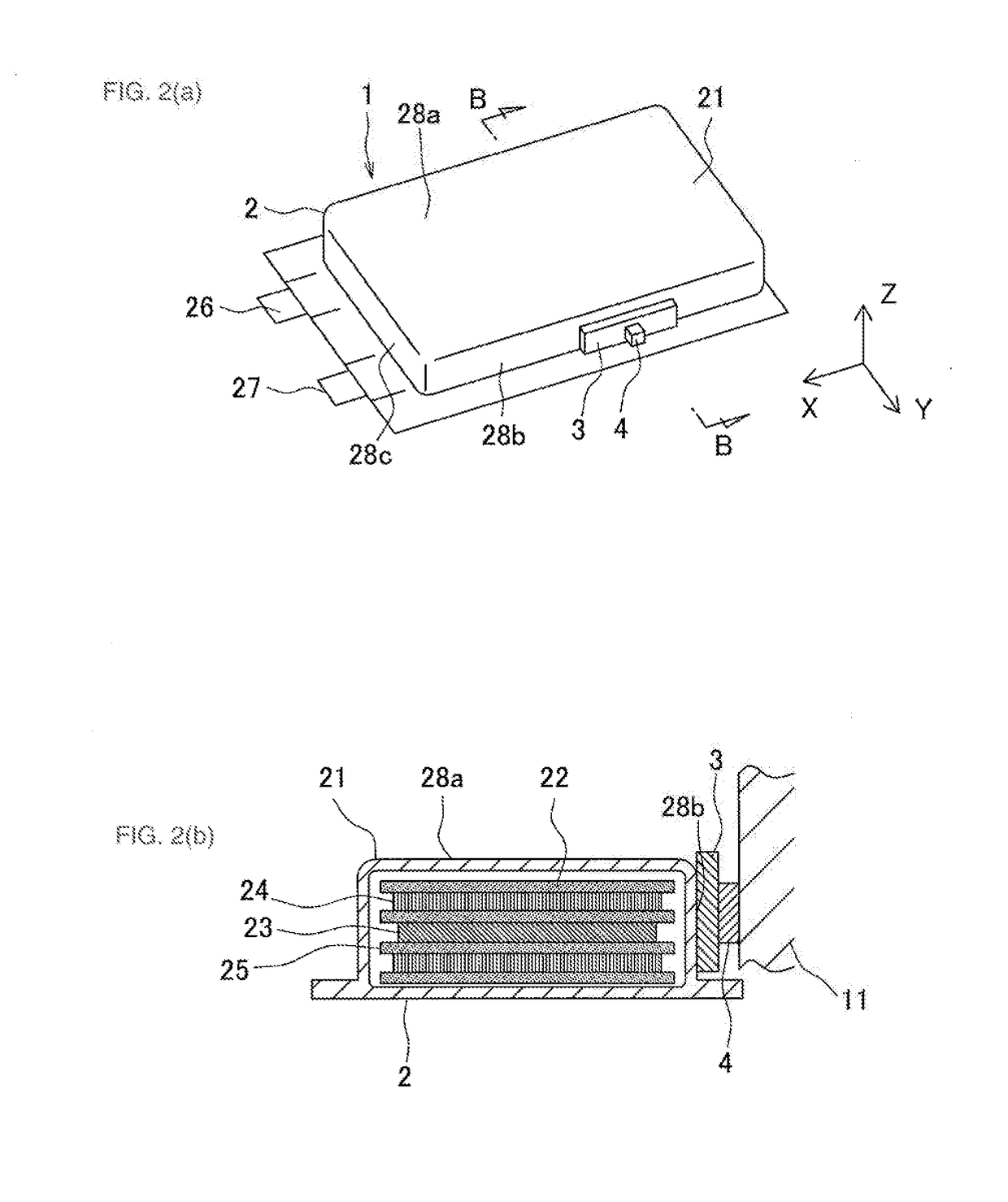Deformation detection method for a sealed-type rechargeable battery and sealed-type rechargeable battery
- Summary
- Abstract
- Description
- Claims
- Application Information
AI Technical Summary
Benefits of technology
Problems solved by technology
Method used
Image
Examples
first embodiment
[0037]The sealed-type rechargeable battery 1 shown in FIG. 1 is provided with a polymer matrix layer 3 and a detection unit 4. A cell 2 constituting this rechargeable battery 1 has a structure in which an electrode group 22 is accommodated in a sealed outer casing 21. The electrode group 22 in the present embodiment is formed by stacking a positive electrode 23 and a negative electrode 24 with a separator 25 interposed therebetween, and such a stacked body is enclosed in the outer casing 21 together with an electrolytic solution. Leading wires are respectively connected to the positive electrode 23 and the negative electrode 24, and terminal ends of these leading wires protrude to the outside of the outer casing 21, so as to construct electrode terminals 26 and 27. The electrode terminals 26 and 27 are provided at one end in the X-direction of the outer casing 21.
[0038]The rechargeable battery 1 of the present embodiment is a laminate battery using a laminate film such as an aluminu...
second embodiment
[0062]A second embodiment has a construction and a function similar to those of the first embodiment except for the matters described below, so that mainly the differing points will be described by omitting description of the common points. Here, constituent elements equal to the constituent elements already described will be denoted with equal reference signs, and duplicated description thereof will be omitted. The same applies to the third to eighth embodiments described later as well.
[0063]Referring to FIG. 2, in the present embodiment, a polymer matrix layer 3 is attached to an outer surface of a wall portion 28b of an outer casing 21 that faces an electrode group 22 in a direction perpendicular to the thickness direction of a positive electrode 23 and a negative electrode 24, specifically, in the Y-direction (right-and-left direction in FIG. 2b). The outer surface of the wall portion 28b corresponds to a side surface of the outer casing 21. The polymer matrix layer 3 faces the ...
third embodiment
[0064]Referring to FIG. 3, in the present embodiment, a polymer matrix layer 3 is attached to an outer surface of a wall portion 28c of an outer casing 21 that faces an electrode group 22 in a direction perpendicular to the thickness direction of a positive electrode 23 and a negative electrode 24, specifically, in the X-direction (right-and-left direction in FIG. 3b). The outer surface of the wall portion 28c corresponds to a side surface of the outer casing 21. The polymer matrix layer 3 faces the electrode group 22 with the wall portion 28c interposed therebetween, and is disposed perpendicularly to an upper surface of the electrode group 22. The detection unit 4 is attached to an inner surface of a case (not shown) of a battery module that faces the wall portion 28c. The electrode swelling exerts a larger action in the Z-direction. Therefore, in the present embodiment in which the polymer matrix layer 3 is attached to the wall portion 28c, the electrode swelling is hardly reflec...
PUM
 Login to View More
Login to View More Abstract
Description
Claims
Application Information
 Login to View More
Login to View More - R&D
- Intellectual Property
- Life Sciences
- Materials
- Tech Scout
- Unparalleled Data Quality
- Higher Quality Content
- 60% Fewer Hallucinations
Browse by: Latest US Patents, China's latest patents, Technical Efficacy Thesaurus, Application Domain, Technology Topic, Popular Technical Reports.
© 2025 PatSnap. All rights reserved.Legal|Privacy policy|Modern Slavery Act Transparency Statement|Sitemap|About US| Contact US: help@patsnap.com



